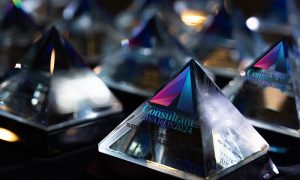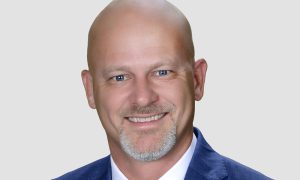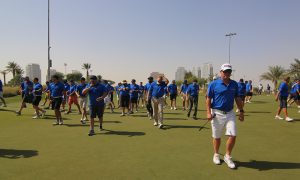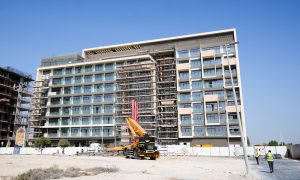Raising the bar
Middle East Consultant speaks to Naomi Miles, Vice President, Human Resources, Middle East & Africa at AtkinsRéalis about HR best practices

How does the Human Resources function help drive the Best Practice standards of a Fortune 500 business? What are the ‘touchstone’ values it embodies and empowers throughout the organisation’s culture? Middle East Consultant spoke to Naomi Miles, Vice President, Human Resources, Middle East & Africa at AtkinsRéalis.
Naomi, across AtkinsRéalis’ many activities, the company sets high standards of Best Practice; how is this manifest in terms of the role that Human Resources plays in staff engagement?
Well, firstly, at AtkinsRéalis, we believe our people are our greatest asset – and the Human Resources team plays a pivotal role in fostering staff engagement and maintaining high standards of best practice. In fact, there are several key areas where we reflect this focus across the business.
Firstly, in terms of Recognition. We are a Great Place to Work-Certified™ organisation, both here in the UAE and in Saudi Arabia, and we have been awarded that accolade for two years running, which is fantastic. It’s a testament to our exceptional employee experience. On the recognition front, through our People and Culture strategy, we focus on building a workplace where people are valued, supported and empowered to thrive. As part of our commitment to foster a culture of recognition, in 2024, we launched our “Make it Brilliant” annual regional awards that acknowledge our people’s achievements and dedication to support our values, clients, projects, and communities. The event has been very successful, with over 800 nominations received in 2025.
Then, we speak about staff Wellbeing and Engagement. Wellbeing is really central to our culture, and we understand that healthy, happy employes really drive productivity – and, of course, innovation. We strongly prioritise mental health, physical health, and overall wellbeing through a variety of key wellness initiatives. We also have flexible working hours, the ability to work remotely, working from home, and so on. Everyone is very much aware how important that sense of wellbeing is, and we fully support them in that.
At the end of the day, it’s really all about looking after each other; remember, most people are expats, away from their family and their home, and it’s important that we engage with each other, so that people aren’t feeling alone or left out.
We have more than 80 nationalities in our business – we’re the most diverse region in the Company. We all get along very well with each other and are very inquisitive about each other’s cultures, because that’s important. With that knowledge, you can better understand what people are trying to explain.
To encourage this sense of everyone working together, in February, we’re launching our global fifth annual APEX Challenge, a month-long fitness initiative designed to get all of our employees moving, prioritise our wellbeing, and most importantly, have some fun while doing it. These are all voluntary events – in the evenings or at the weekend – where we all get into some friendly competition, get out and about, and whoever is the overall points winner gets a good, worthwhile gift, too.
Another important aspect is Feedback and Continuous Improvement. We have regular engagement surveys and we use a tool called VOX. It’s an anonymous survey mechanism and it provides very clear insights into employee experiences. We use that feedback to inform what we put into practice from an HR perspective, and also in terms of delivering business strategy. Our feedback with this has been astonishing: we’ve achieved the highest overall employee engagement score in the entire company globally – 91%, which is phenomenal!
It makes a lot of difference when we take note of what people say and then put that into practice.
One more aspect that I’m very proud and passionate about is our initiative “School of the Future” competition. In 2024, we launched this initiative in the UAE, inviting students to collaborate with our teams to design a School for the Future. We help them conceptualise the design, evolve the functionality and tackle the practical aspects of the delivery. More than 70 students participated in the launch phase – and the winners were all girls! This really is ED&I at an early stage, getting girls involved in key areas of the STEM agenda, and hopefully helping them decide on future career paths and goals. This year, we’re opening the competition to more schools, and to Emirati schools as well. As well as aligning with Dubai’s Vision 2030, this is a great incentive for getting more UAE nationals involved in the sector.
On this note, I should mention that we just had our first cohorts of Emirati graduates here, and 80% of them were women – all exceptionally keen and talented, with a committed interest in the STEM disciplines.
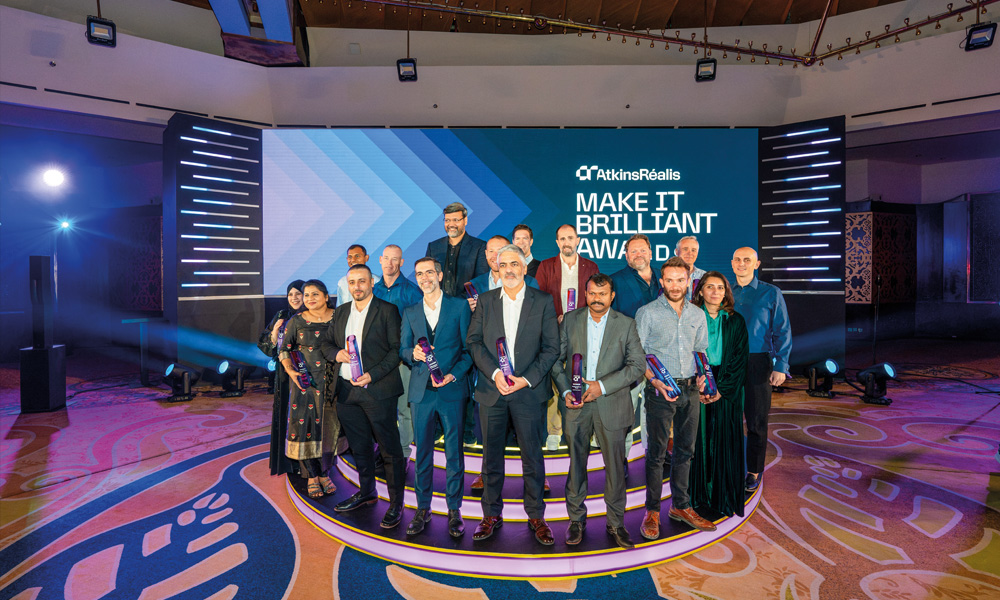
How do you stay aligned with the latest developments in areas such as DEI and employee Wellness – do you and the team regularly attend workshops, or receive summaries of keynote legislation, and so on?
Well, there are a number of things that we do. Firstly, our business is global, and of course, certain divisions will be more evolved in some areas than others, that can lead to a powerful exchange of valuable information. To ensure that the context is relevant for local needs, we cost-in employee feedback; this gives us a rounded, accurate idea of the current issues and dilemmas that we need to be looking at in terms of ED&I. That employee resource is invaluable. Then of course, for more specific areas, you can also Google to look at key legislative updates, their timings and what their real impact might be. There is a vast amount of information available, and it’s part of the role of the HR team to disseminate it and ensure compliance.
I also belong to a wide network of other HR leaders, and we will often reach out to each other (usually in an e-mail) to ask how we’d tackle certain challenges and agendas for instance. This is a great support system and brings together a significant level of real expertise.
Here at AtkinsRéalis, we also believe in the ‘incubator effect’ – in other words, we can try things out, give them the right support, and then see if they work. Last year, for example, we rolled out several wellbeing initiatives focused on boosting our employees’ physical and mental wellbeing through engaging webinars, focus groups and activities held in the office and onsite. We’ve invested time and money into this, and already, it’s having a very positive impact.
Given the sheer size of AtkinsRéalis, how do you ensure that the Human Resources function consistently adds value to the mix?
HR is central to driving organisational success, and it is paramount that the leaders feel this as well. There should always be a seat at the table. The Human Resources strategy feeds directly into the business strategy to ensure that we have a balanced and inclusive culture. HR is also a key partner in the mix, prioritising human asset capabilities, and bringing processes that align with the broader corporate strategies.
In all this, forward planning is key; we anticipate the business’ needs, looking at what the organisation’s goals are as well as the projects and markets in the pipeline. So, then we can see exactly what resources will be needed. As a next step, we don’t just meet those needs purely by external recruitment, but by up-skilling existing employees wherever it’s feasible and practical. This makes sound commercial sense as well as signaling to staff that we have a real interest in their future: it’s not just about a job, but a whole career.
The reality is, we’re always asking ‘how can we be better’? ‘How can we maintain that interest in the employee’s future?’ This forward-thinking means that HR is consistently aligned with both the needs of the individual and the market forces shaping the wider business.
To what extent do the protocols followed by the Human Resources team vary from one international region to another?
We try to strike a careful balance between global consistency and local adaptability. So, this dual approach ensures that our core values and strategic objectives are upheld, whilst also respecting the local, legal and cultural context we operate in. Globally, HR practices are driven by a range of principles, but of course adaptation allows us to be even more effective and relevant in a regional setting.
This is important, because cultural contexts can all too easily cause friction. People in the West, for example, may not agree with everything that is culturally suitable here; but let’s at least find the respect for each other’s culture, a better understanding of each other’s perspectives – and always be sure we have the mechanisms in place to widen people’s horizons.
How do you go about creating a culture of gender parity? Also, what are the mechanisms that enable you to provide a ‘level playing field’ for the many diverse ethnicities within the company?
Achieving gender parity and providing equitable opportunities for employees is fundamental to our culture and strategy. We do have a raft of targeted initiatives, and it’s always important to be as inclusive as possible.
’Different Makes a Difference’ is one of our taglines, and we are all about empowering people from diverse ethnic groups to reach their full potential. Our flexible work arrangements mean that we are not excluding anyone from the talent pool.
Beside this, we have outreach and development programmes. Three years ago, we launched our Graduate Development Program in Saudi Arabia to support the country’s nationalisation efforts, remarkable continuous growth, and sustainable future. Following its success, with 110 talented Saudi graduates joining to date, we re-launched the Program in the UAE in 2025 to expand its reach and help build Emirati talent for the future.
We also have a lot of programmes that promote awareness of unconscious bias and cultural understanding. We continue to pursue the area of unconscious bias because we believe it can really make a difference when people properly understand the impact of what they are saying.
In terms of how effective and all-embracing any given program is, with the advent of AI, there is no excuse for any policy not to be fully inclusive. We do our utmost to ensure that these programs put the key issues front and centre throughout.
Specifically in terms of gender parity, while we don’t pursue a policy of positive discrimination as such, there will be situations where we will ask directly if there are women team members who are ready to step up to the next level. We will not approach men in these conversations, because the recruitment relates to those verticals where women are dramatically under-represented. So, if there are two people who are both equally qualified for the job and we can’t decide between them, and there is a man and a woman, if we are looking at, say, the engineering sector, we will choose the woman, in order to ensure representation.
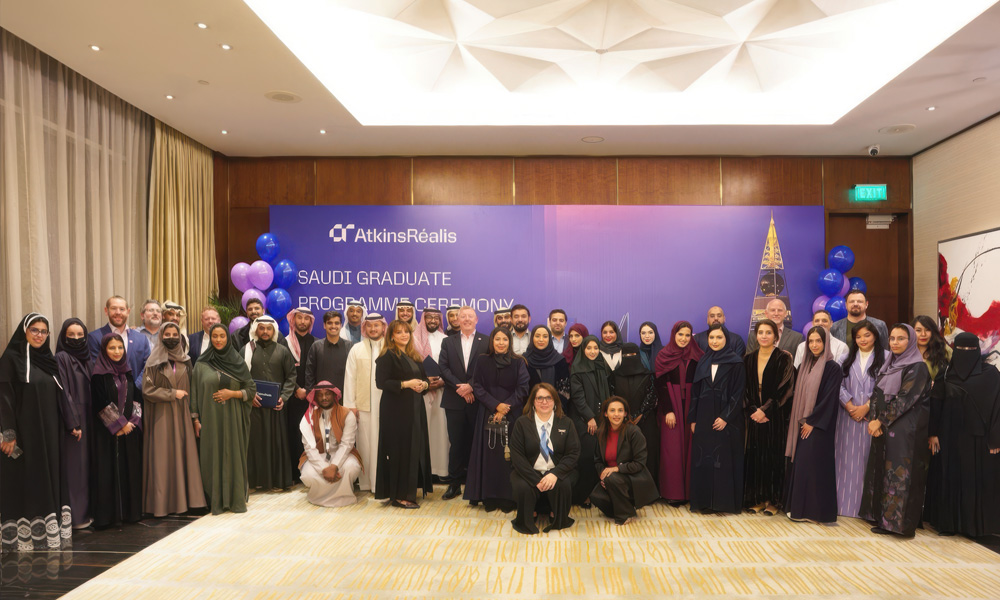
Today, we hear a good deal about the role of Mentoring. How do you deliver a Mentorship structure – and do you believe that Mentoring, with its great need for confidentiality, should formally be part of the HR function or not?
We believe that mentoring is a cornerstone of our employee development framework, and we use it widely; for example, we actively support employees looking to achieve further career certifications, and specifically for this, we have people who can support and mentor you.
Whatever the mentoring programme, we ensure that it sits within our Human Resources Management system, so yes, in this sense, it is within our remit. Yet it is always fully confidential – even your line manager can’t see the details about your mentoring. While the mentoring relationship is recorded in the HR system, it cannot be accessed without a special request being made, and that would itself take place through the HR function. Confidentiality and trust is the backbone of this mentoring model.
I should add that we don’t just have mentors in the Middle East, but we have a global model, so your mentor doesn’t have to be within a local office or division. In fact, I’m actually an advocate for avoiding the use a locally-based mentor; if employees work with an international, overseas mentor, they will be working with someone who’s not so bound up with regional context, and can see the bigger picture.
Do the broader HR initiatives that the organisation follows derive from the C-Suite – and how do you see the role of the C-Suite in creating day-to-day corporate culture?
It’s a mix; there are obviously business drivers emanating from the C-Suite, such as growth, margin improvement, etc.- our HR initiatives then intertwine with these and explain how we are going to get to that business outcome. We ask: “what do we need to do from an HR perspective to reach those objectives?
Of course, at the end of the day, the business needs to tell us where the company is going and the markets it will be involved in – we can’t just act independently!
Then, there is the Vision and Leadership side, for which the C-Suite sets the key goals, and we all need to get on board with them. There are also factors such as Culture-building and Behaviour-building – if the C-suite doesn’t treat people in the way they should, how can anybody else be held responsible? Working with the C-Suite, Human Resources can build the right framework for ethics, inclusivity, collaboration, trust (and trust is perhaps the most important thing of all!).
I’m a firm believer that when Human Resources and the C-Suite are aligned and working together effectively, everyone can feel and experience the benefits. In our own surveys here at AtkinsRéalis, it’s very noteworthy that 96% of people expressed a pride in their company; 97% support our goals – and 95% would recommend AtkinsRéalis as the best company to join! What’s more, that’s not just this year – it’s for the last several years, too.
Organisations need to remember that when everybody is behind you – and really gets it – you are unstoppable!
